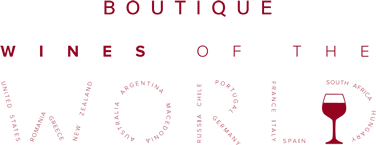Champagne, if you are seeking the truth, is better than a lie detector. It encourages a man to be expansive, even reckless, while lie detectors are only a challenge to tell lies successfully.
Quote
Champagne is mostly fermented in two sizes of bottles, standard bottles (750 millilitres), and magnums (1.5 litres). In general, magnums are thought to be higher quality, as there is less oxygen in the bottle, and the volume to surface area favours the creation of appropriately sized bubbles. However, there is no hard evidence for this view. Other bottle sizes, named for Biblical figures, are generally filled with Champagne that has been fermented in standard bottles or magnums.
Sizes larger than Jeroboam (3 L) are rare. Primat sized bottles (27 L)—and as of 2002 Melchizedek sized bottles (30 L)—are exclusively offered by the House Drappier. The same names are used for bottles containing wine and port; however Jeroboam, Rehoboam and Methuselah refer to different bottle volumes. Unique sizes have been made for special occasions and people, the most notable example perhaps being the 20 fluid ounce / 60 cL. bottle (Imperial pint) made especially for Sir Winston Churchill by Pol Roger.
Champagne, if you are seeking the truth, is better than a lie detector. It encourages a man to be expansive, even reckless, while lie detectors are only a challenge to tell lies successfully.
In 2009 a bottle of 1825 Perrier-Jouët Champagne was opened at a ceremony attended by 12 of the world’s top wine tasters. This bottle was officially recognised by Guinness World Records as the oldest bottle of Champagne in the world. The contents were found to be drinkable, with notes of truffles and caramel in the taste. There are now only two other bottles from the 1825 vintage extant. In July 2010, 168 bottles were found on board a shipwreck near the Åland Islands in the Baltic Sea by Finnish diver Christian Ekström. Initial analyses indicated there were at least two types of bottle from two different houses: Veuve Clicquot in Reims and the long-defunct Champagne house Juglar (absorbed into Jacquesson in 1829.)
Champagne, if you are seeking the truth, is better than a lie detector. It encourages a man to be expansive, even reckless, while lie detectors are only a challenge to tell lies successfully.
The shipwreck is dated between 1800 and 1830, and the bottles discovered may well predate the 1825 Perrier-Jouët referenced above. When experts were replacing the old corks with new ones they discovered there were also bottles from a third house; Heidsieck. The wreck, then, contained 95 bottles of Juglar, 46 bottles of Veuve Clicquot and four bottles of Heidsieck, in addition to 23 bottles whose manufacture is still to be identified. Champagne experts Richard Juhlin and Essi Avellan MW. described the bottles’ contents as being in a very good condition. It is planned that the majority of the bottles will be sold at auction, the price of each estimated to be in the region of £40,000–70,000.
